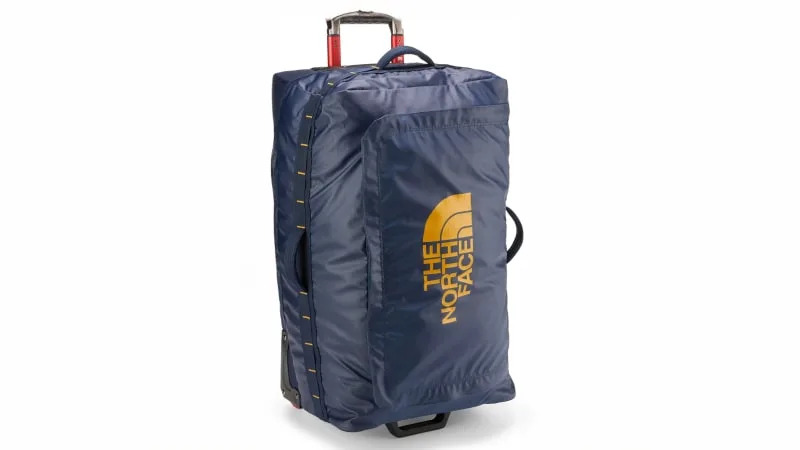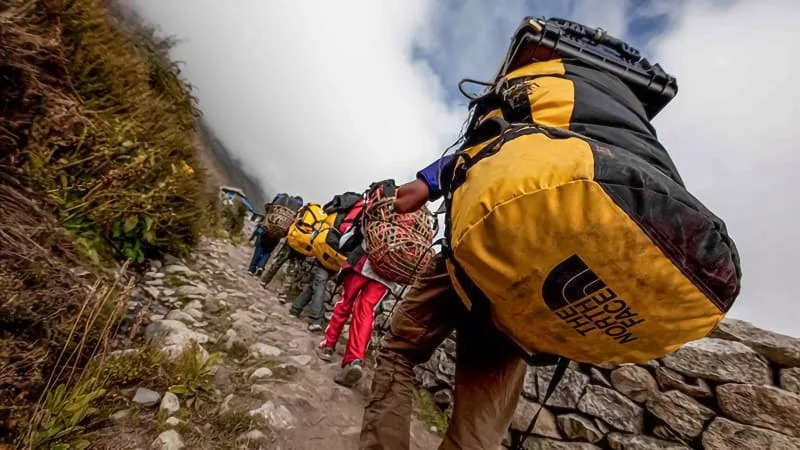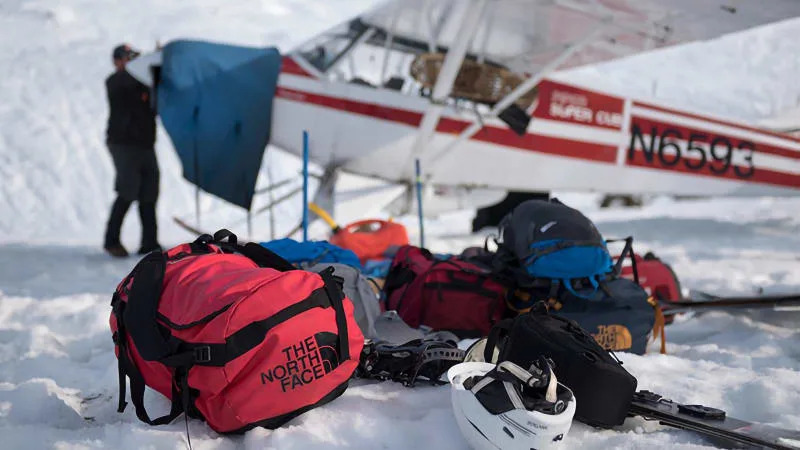The North Face duffels up to 40% Off at REI: Base Camp Duffel vs. Base Camp Voyager Roller Bag

Autoblog may receive a share from purchases made via links on this page. Pricing and availability are subject to change.
I was in the middle of a trip to upstate New York when I purchased my first Base Camp Duffel from The North Face. My hard-sided luggage, which I foolishly thought would last a year’s worth of air travel, had exploded after only a few months. So, I hopped onto Amazon and had a 95-liter Bomber Blue Cosmic waiting for me at my next hotel room. Since then, that bag has traveled with me almost everywhere — from New Zealand to Iceland, Patagonia to Cuba. It’s been thrown around airports and tossed into (and onto) trucks. I’ve trusted it to keep my clothes dry in downpours, strapped to the roof of our Subaru as I drove throughout the southwest, and lived out of it on an overlanding trip from Seattle to Banff. It has a couple of scrapes and scratches, but it has never torn. And if it does, I’m not too worried because it comes with a pretty good lifetime guarantee.
While this bag is a great one, carrying 95 liters worth of clothing and camera gear is not as much fun as it used to be. After my daughter was born and the amount of “stuff” my family needed to bring along on trips quadrupled, I decided my duffels needed wheels. I’ll tell you what, I’ll never go back, at least not when it comes to airline travel. After using the carry-on size for more than a year, REI sent me the much larger 29” Base Camp Voyager roller bag for testing. The 29” version carries just about the same amount as the regular duffel I described above (94 liters vs 95), but as far as convenience goes, the two aren’t even in the same league.
Capacity: Available in multiple sizes, up to 150 liters, providing ample storage for extended trips.
Material: Made from durable, water-resistant material, ensuring protection against light rain and splashes.
Carrying Options: Features backpack straps for hands-free carrying and padded handles for comfortable grip.
Organization: Includes internal zippered pockets and external compression straps to keep your belongings organized and secure.

Capacity: Holds up to 94 liters, comparable to the size large Base Camp Duffel, suitable for long trips with heavy packing.
Material: Constructed from lightweight, recycled ripstop nylon, offering an eco-friendly option with durable performance.
Mobility: Equipped with a telescoping handle and smooth-rolling wheels for easy maneuverability through airports and on paved surfaces.
Shape and Design: Modern rectangular shape with internal compartments, providing structured packing and efficient use of space.
The Similarities: Base Camp Duffel and Voyager Roller Bag
Let’s start with the similarities, other than the size. Both bags are made to be water-resistant. This does not mean waterproof. A splash of water? You’re probably going to be okay. Driving with the bag strapped to the top of your car in a downpour? Some water is probably going to get in. Though, in my experience, it does a good job. Both feature compression straps, padded handles for carrying, and a zippered pocket or two inside for some organization. They’re mostly a big area for all of your stuff to be thrown, which is where packing cubes come in handy.

The Differences: Weight, Shape, and Carrying Method
Now onto the differences. The roller bag is made with the same durable yet lightweight recycled ripstop nylon body fabric as the The North Face Voyager Base Camp duffel. This material is lighter and more eco-friendly than the material used on the non-Voyager Base Camp duffel, which makes it weigh less but possibly less abrasion and tear-resistant. For what it is worth, I have yet to experience any tears with my personal carry-on roller or the test roller I was sent. Another difference is the shape of each of these duffels. The Base Camp duffel is a cylindrical shape, while the roller has adopted a more modern rectangular shape. This can be good or bad depending on what you pack for your trips. Though, with over 90 liters of space, both options swallow up a ton of gear.
The Carrying Experience: Backpack Straps vs. Telescoping Handle
The biggest difference, of course, is the way you carry them. The Base Camp duffel features backpack straps, and they work fairly well, especially when the bag is full, though they have, on more than one occasion, left marks on my shoulders after a long day of hauling. The telescoping handle on the roller bag is easy to use, and the wheels make quick work of the tile and carpeted floors of the world’s airports, though rougher terrain can make things a bit unwieldy.

Practical Usage: When to use which bag
Will the roller bag completely replace my Base Camp Duffel? Definitely not. I tend to stick to the roller bag when I am flying or on more “luxurious” road trips, when I am staying at a friend’s house or a hotel. However, it rarely makes it to the car for camping trips or any other unpaved adventures. For those, I’ll pop an Aleve, throw all 95 liters on my back, and hope that the trek from the car to the campsite isn’t too long.



